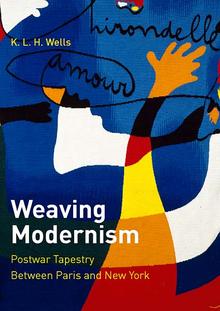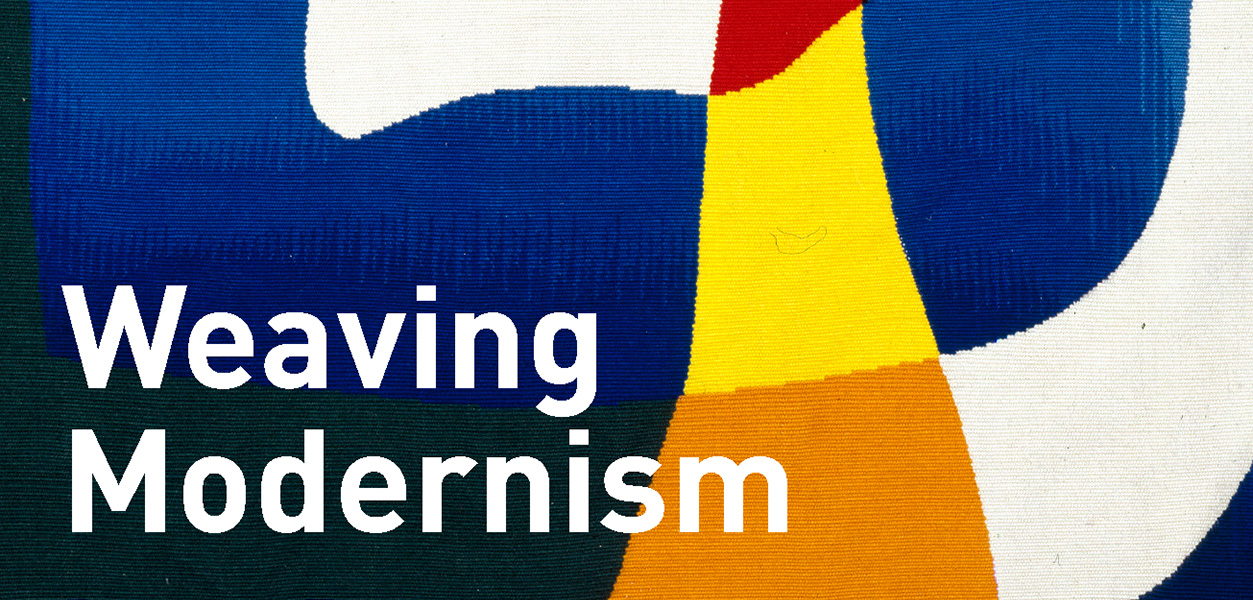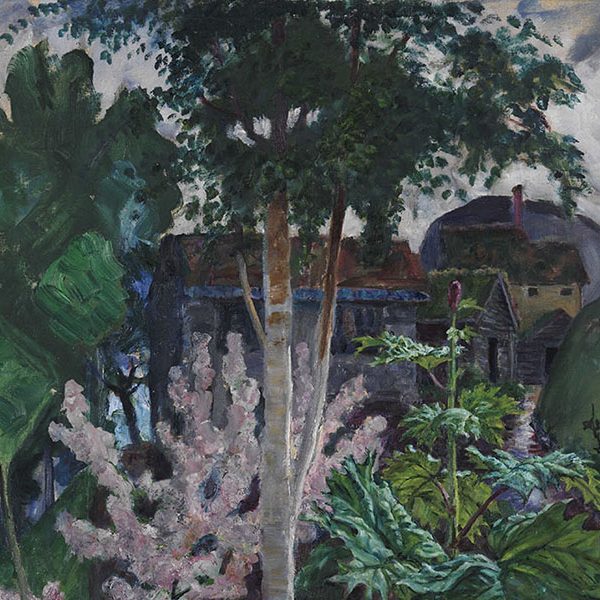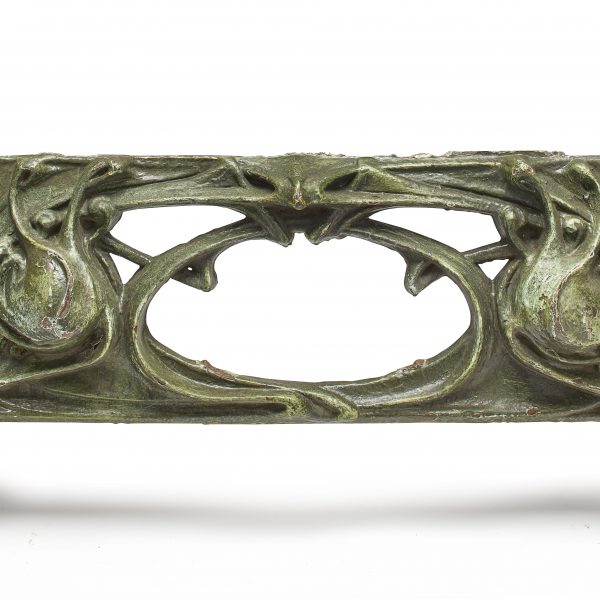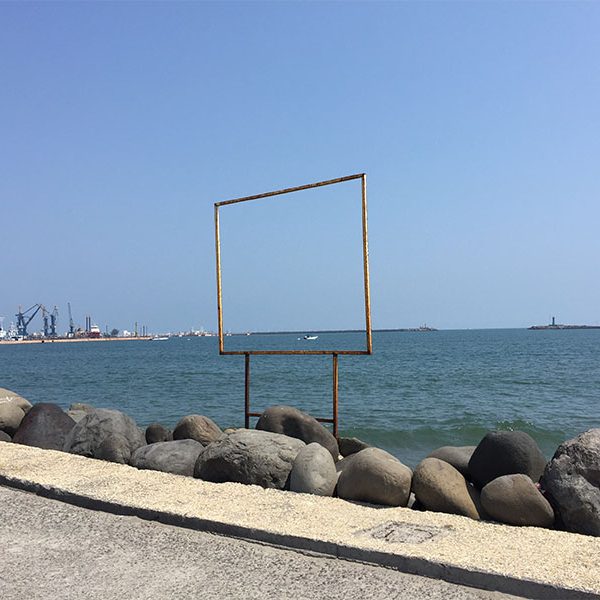Modernism’s Other Tapestry
K. L. H. Wells —
Full is a tapestry that is instantly recognizable as a work by Josef Albers, who is best known for his series Homage to the Square. Like the paintings and prints in that series, this tapestry presents a set of nested squares in deeply saturated hues that seem to push forward and pull back, echoing but also forcing against the rectilinear limits of the work. Here, however, the materiality of the tapestry’s threads gives these blocks of color a visible heft, a sense of substance and weightiness, even as the colors seem to float and radiate in space. And the texture of the weave creates a slightly mottled effect that introduces variation and surface interest to the large expanses of seemingly undifferentiated color.
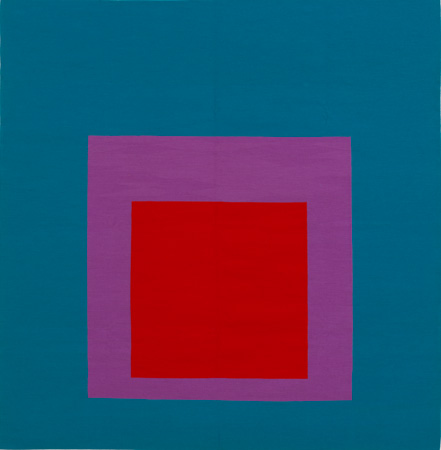
© 2019 The Josef and Anni Albers Foundation/Artists Rights Society
Albers “created” this tapestry not by weaving it but by supplying a design that his Parisian dealer, Denise René, had executed at the Atelier Tabard, a prestigious weaving workshop in Aubusson, France in 1967. Like most of the other tapestry artists that I consider in Weaving Modernism: Postwar Tapestry between Paris and New York, Albers enjoyed a certain prestige as a man, a painter, and an established artist at the height of his career. Indeed, his enlistment into tapestry design in 1965 was evidence that there was a ready market for his work. Because tapestry weaving is a labor intensive and expensive undertaking, most producers focused on soliciting designs by well-known artists that would sell with relative certainty. Denise René, who produced tapestries by Albers and other geometric-abstract painters represented by her gallery, was no exception, and Albers only began designing tapestries at her urging. For Full and other tapestries, Albers used an extant art print as the basis of his design, which was typical of how modernists used tapestry and printmaking alike to reproduce their work for a growing market of modern art collectors. And Albers is also representative of the tapestry artists considered in Weaving Modernism in that his endeavor was transatlantic. Although working in the US, his tapestries were made in France and sold in both countries. These works united the prestige of a French luxury craft tradition with a style of late-modernist painting that had become deeply associated with the power of the postwar United States.
Josef, of course, is not the Albers most associated with tapestry. Indeed, many art historians would assume an “Albers tapestry” refers to a work by Josef’s wife Anni Albers, the famous Bauhaus weaver and designer who hand wove prototypes for the textile industry and, increasingly after World War II, works of art. Having fled Nazi Germany for the United States with her husband, she trained a new generation of artists in innovative weaving techniques and is easily considered the most influential artist weaver of the twentieth century. The story of her weavings, though certainly not exhausted, is relatively well known. But although Josef’s tapestry output pales in comparison to that of his wife—he made thirteen different works in limited editions—the assumption that a tapestry would be by Anni rather than Josef Albers still illustrates the somewhat one-sided picture that we have of modernism’s relationship to textiles. We tend to think of modernist textiles as applied arts in the form of clothing, rugs, furnishing fabrics, embroideries, and needlepoints; to assume that their most important practitioners were women; and that such practices were part of the historical avant-garde’s utopian efforts to unify art and life. Yet examining the phenomenon of tapestry after World War II paints a very different picture of modernism’s relationship with textiles. Postwar tapestry shows that textiles could also be collected as stand-alone art objects, that they could be designed by established artists, mostly men, and that while they did help extend art into daily life, they did so mainly by increasing the visibility of modern art in conservative sites like art museums, houses of worship, and corporate headquarters.
Anni Albers herself participated in this other kind of modern tapestry. In 1970, she allegedly gave up her weaving practice altogether in favor of the greater ease and eminence of printmaking. But in fact, she continued to design tapestries that were woven by others. For example, in 1983, the art consulting firm Vesti Corporation commissioned Albers to design four tapestries for the new ATT headquarters in New York designed by Philip Johnson.
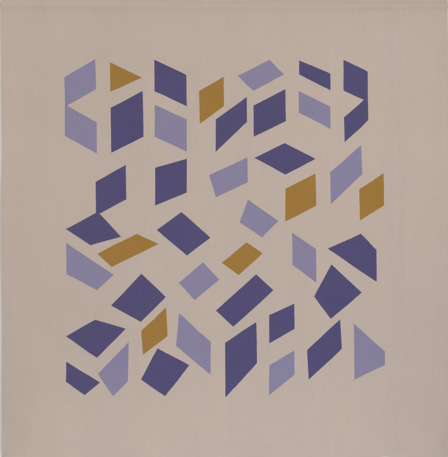
© 2019 The Josef and Anni Albers Foundation/Artists Rights Society
Just as her husband Josef had done with his dealer Denise René, Anni Albers sent extant art prints as tapestry models, and the final works were based on her Floating and Orchestra prints. Through this project, Albers was able to return to tapestry production and to create monumental works without the labor of weaving. Just as with her printmaking, here Albers could serve as the conceptual author rather than the technical maker of the work, the artist rather than the craftsperson. Moreover, the ATT commission satisfied Albers’s desire to create a traditional low-warp French tapestry, what she called a “flat Aubusson tapestry.” In this way, Anni Albers was finally able to attain the kind of prestige that her husband had enjoyed through his Aubusson tapestry projects two decades earlier. She was able to participate in modernism’s other tapestry, a transatlantic endeavor that reproduced the work of established artists at the height of their career to stimulate a growing market for abstract art in modern life. Recognizing that both Josef and Anni Albers made these other tapestries forces us to reconsider modernism’s relationship to French tradition, reproduction, and decoration, and even to reconsider the revisionist narratives that have insisted on postwar modernism’s opposition to those practices. Weaving Modernism begins those discussions by telling the story of modernism’s other tapestry, a tapestry in which both Joesf and Anni Albers could take part.
K. L. H. Wells is assistant professor of art history at the University of Wisconsin-Milwaukee.
Further reading:
